NEPAL IS A MAGNIFICENT COUNTRY FOR NATURAL BEAUTY AND CULTURE. SEAN SEQUEIRA PENS DOWN A GUIDE TO VISITING THE COUNTRY THAT IS CALLED THE ‘ROOF OF THE WORLD’
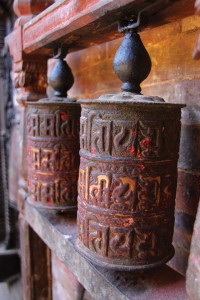 GETTING THERE
GETTING THERE
Air: Tribhuvan International Airport in Kathmandu is the only international airport in the country.
Road:Sunauli (Belhiya) is the most popular border crossing. The Nepali town of Bhairahawa is at a distance of 4 kilometres from the border crossing. Bhairahawa connects travellers to Kathmandu and Lumbini.
Rail: Gorakpur is the nearest major railway station while Nautanwa is the nearest station to the Sunauli border crossing. Trains are infrequent between Gorakpur and Nautanwa so it’s best to make the 2-hour bus commute.
VISA
Indian citizens do not require a visa. Photo identification is required for proof of Indian citizenship. Valid identification documents are passport, driving license, ration card with photo, election commission card or any photo identity card issued by a government body.
CURRENCY
Indian rupees are accepted for all monetary transactions. Indian rupee notes of Rs. 500 and Rs. 1,000 are considered illegal and not accepted. Remember to check exchange rates between the Indian and Nepali rupee before your journey.
BEST TIME TO VISIT
The best months to visit are after the monsoon between October and December since the air is clean. The summer months of April to June are also a good time since the flora will be in bloom.
TRAVEL
There are many domestic airports. The roadways are well connected between major cities but travel to remote locations can be inconvenient. The best transport options are buses, micro buses and motorcycles. The international driving license is accepted in Nepal.
ACCOMMODATION
The major cities of Kathmandu and Pokhara have four star hotels. Home stays are the best option in the remote towns and villages to experience the local culture and cuisine.
CUISINE
Home stays give you the best experience of the traditional food. Any cuisine can be found in the major cities including fast food like burgers and fries from international franchises.
 POKHARA
POKHARA
This is the third largest city of Nepal but is fast gaining popularity since it is a picturesque lake-side city in the Pokhara valley with the Annapurna mountain range surrounding it in the distance.
Phewa Lake: It is a freshwater lake on the edges of the city of Pokhara city. Water sports and boating are major attractions on the lake since there are splendid views of the neighbouring mountains from different parts of the lake.
World Peace Pagoda: Also known as Shanti Stupa, the pagoda is on a hilltop overlooking Phewa Lake and can be reached by taking a boat ride across the lake followed by an uphill trek.
Sarangkot: It is a perfect trek from Pokhara city which requires a fair amount of strenuous work. But the views from the top of the village are excellent since it overlooks the city and lake.
Kaskikot: It is a village located 1,788 metres above sea level and has a panoramic view of the Himalayas around it.
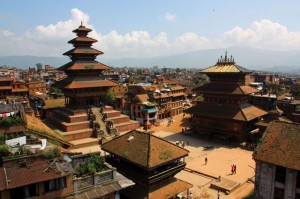 KATHMANDU
KATHMANDU
Kathmandu is the largest city in Nepal and the cultural hub of the country. It has become a melting pot for cultures and a starting point for international tourists looking to explore the country.
Kathmandu Durbar Square: One of the three ancient cities in Kathmandu valley, this square is famous for the Hanuman Dhoka Royal Palace, Taleju Temple and the residence of the Living Goddess called Kumari Ghar.
Patan Durbar Square: It is the second of the three ancient cities of Kathmandu valley which is famous for the Krishna temple. The temple, made entirely of stone, dates back to the 16th century and is the first Shikara style architecture in Nepal.
Bhaktapur Durbar Square: The third ancient city in Kathmandu valley, Bhaktapur is famous for the palace of 55 windows which is a magnificent work of woodcarving. Facing the palace is a large stone pillar atop which sits a statue of King Bhupatindra Malla.
Pashupatinath: This is a 5th century temple built on the Bagmati River. It is one of the most important temples for Hindus around the world which is dedicated to Lord Shiva.
Swayambhunath: Sitting on top of a hill, this is one of the most important Buddhist stupas in Nepal. One of the best ways to reach the summit is to walk up the 365 steps along the hill that end at the gates of the shrine.
Bodhanath: One of the most important structures of Tibetan Buddhism, this large stupa is thronged to by countless devotees throughout the year.
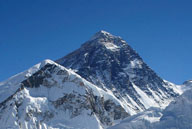 EVEREST BASE CAMP
EVEREST BASE CAMP
The tallest mountain in the world, Everest has been a daunting challenge for many mountaineers. It may not be possible for everyone to scale the mountain but trekking to the base camp is manageable for most. It is advisable to get assistance from a Sherpa. It is also important to acclimatise oneself by taking a break beforestarting a trek to a high altitude and trekking up slowly to avoid Acute Mountain Sickness (AMS). The Himalayan Rescue Association assists those affected by AMS with a centre at Everest Base Camp and at Manang (for those trekking up the Annapurna mountain range).
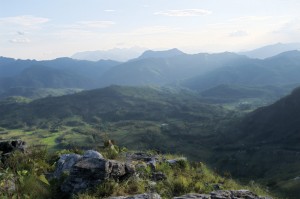 BANDIPUR
BANDIPUR
Bandipur is a remote hill station at a distance of 143 kilometre west from Kathmandu and 80 kilometre east from Pokhara. The small town has quickly become a tourist attraction for those who enjoy seclusion and good weather at a high altitude. A downhill trek from the town for roughly two hours will lead you to Siddha Cave, the largest cave in Nepal. A little further on the same trail is Patale Dwar; a natural chamber-like formation which is nicknamed Gateway to the Underworld.
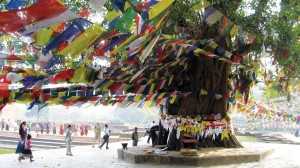 LUMBINI
LUMBINI
Lumbini is the birthplace of Siddhartha Gautama, the man who would grow up to become Gautama Buddha and one of the most important figures of Buddhism. The actual spot of his birth is marked with a stone in the Mayadevi temple. The temple is located inside a large park which also has ruins of ancient monasteries, a sacred Bodhi tree, an ancient bathing pool and an Ashoka pillar.
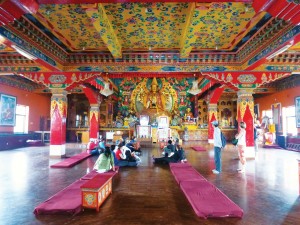 KOPAN MONASTERY
KOPAN MONASTERY
Located on a hill on the outskirts of Kathmandu, Kopan Monastery is a popular destination for local tourists. It is usually off-limits to visitors during the week and only allows visits on weekends; it is best to confirm with the monastery authorities before attempting a visit. They organise courses for those interested in meditation and learning about Buddhism. The courses require prior registration and are priced at approximately Rs. 5,500 for 7 days and Rs. 7,500 for 10 days. The fees include accommodation in dormitories, food and course material. Prior registration is required to enrol for the courses.
Volume 3 Issue 7































